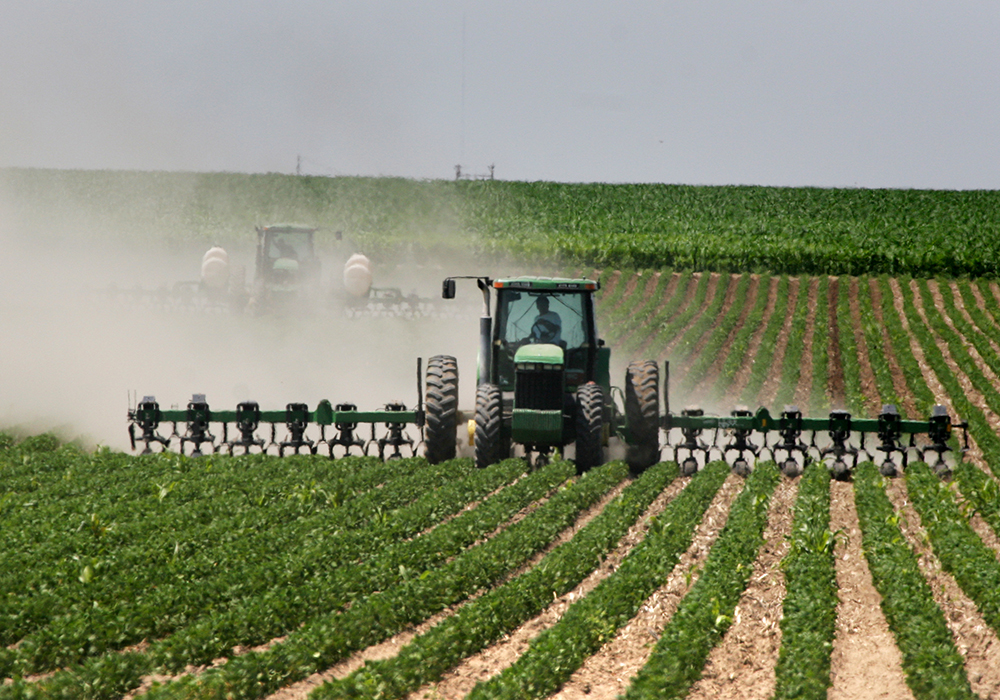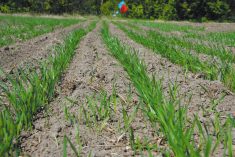Crop markets have been falling of late because of slow demand and generally favourable weather around the world.
I’ll first cover the factors weighing down prices and later note the spots with production issues that could support prices.
The cool spring in grain production areas of Canada and the United States has slowed field work in the spring wheat zone, but in the heart of the U.S. Midwest, corn and soybean planting is progressing at a near normal pace.
The drought in the U.S. southern Plains broke April 26-28 with the best rainfall in many months. The hard red winter wheat crop was in very poor shape and the moisture will likely not make a big improvement to production prospects but should halt the decline. Also, the rain will improve conditions for spring planting and pastures.
Read Also

Chinese offer complicates canola marketing
Recently the Chinese ambassador indicated that there would be a potential deal between Canada and China regarding the current tariff war.
Winter-seeded crops in most of Europe have entered spring in good condition and weather is favourable for them and for spring crop planting.
The European Union forecasts the canola harvest in the bloc will reach 19.8 million tonnes this year, slightly lower than 20 million last year but ahead of the five-year average by 15 percent.
Good weather conditions also generally rule in Russia’s winter wheat areas and in Ukraine.
China’s winter wheat is a bit dry but officials there say it is in better shape than last year and there are no alarm bells ringing.
India’s winter crops were hit by heavy rain and hail just before harvest. New production forecasts have not been released yet but the damage was enough that the government is maintaining its ban on wheat exports that it imposed last year following damage to that harvest caused by an intense heat wave.
Australia is facing what could be drier than normal conditions in coming months as the El Nino develops in the Pacific. But for now, there is adequate soil moisture for the winter crop planting season.
Overall, conditions have comforted crop traders, who believe there is no need to rally prices to buy acres.
Also weighing down prices last week was news that China had cancelled 327,000 tonnes of U.S. corn on April 24 and 233,000 tonnes on April 27. This raised the idea that China will get most of its immediate corn and soy needs from Brazil.
This is the first year that China has approved corn imports from Brazil.
Brazil has almost completed the harvest of an excellent soybean crop estimated at 154 million tonnes, up from last year’s 130.5 million.
That is offsetting the disaster in Argentina where the U.S. Department of Agriculture forecasts only 27 million tonnes because of drought, down from last year’s 43.9 million.
Attention now turns to Brazil’s second corn crop, which makes up about 75 percent of its production.
Brazilian forecaster CONAB expected 42 million acres in the second crop, up about 1.5 million acres from last year.
A lot of the crop was seeded late because of the slow soybean harvest but conditions are still mostly favourable. Some areas are a bit dry and there are worries about frost striking in the South American winter.
Longer range modelling shows that the central corn-growing area in Brazil could experience drier than normal conditions in May.
Second crop corn harvest begins in June and extends into September. We’ll have to keep monitoring it.
While Brazil’s corn crop is a work in progress, the worst production problem for an upcoming crop is in North Africa.
I noted earlier that much of Europe has weather favourable to crop development, but that does not extend to Spain and across the Mediterranean Sea to North Africa, where it is hot and dry.
“The latest satellite-derived Vegetation Health Index (VHI) indicated poor to very poor conditions from Morocco into central Algeria where winter grains were filling to maturing,” according to the April 25 USDA Weekly Weather and Crop Bulletin.
“The VHI remained highly variable farther east, with good crop vigor in coastal portions of northeastern Algeria and Tunisia contrasting with abysmal conditions farther inland.”
Morocco, Algeria and Tunisia are strong customers for Canadian durum. They also import large amounts of soft wheat from France and other EU countries.
In the Black Sea region, the issue is not weather but the ongoing Russia-Ukraine war.
A deal brokered by United Nations that allows Ukraine to ship crops out of its Black Sea ports is under negotiation as it is set to expire in May.
Russia complains that while the deal does not specifically restrict Russian agricultural exports, other measures taken by Ukraine’s allies regarding banking, logistics and insurance are inhibiting Russia’s fertilizer and crop sales.
Russia says that if its demands are not met, it will not agree to extend the agreement beyond May 18.















